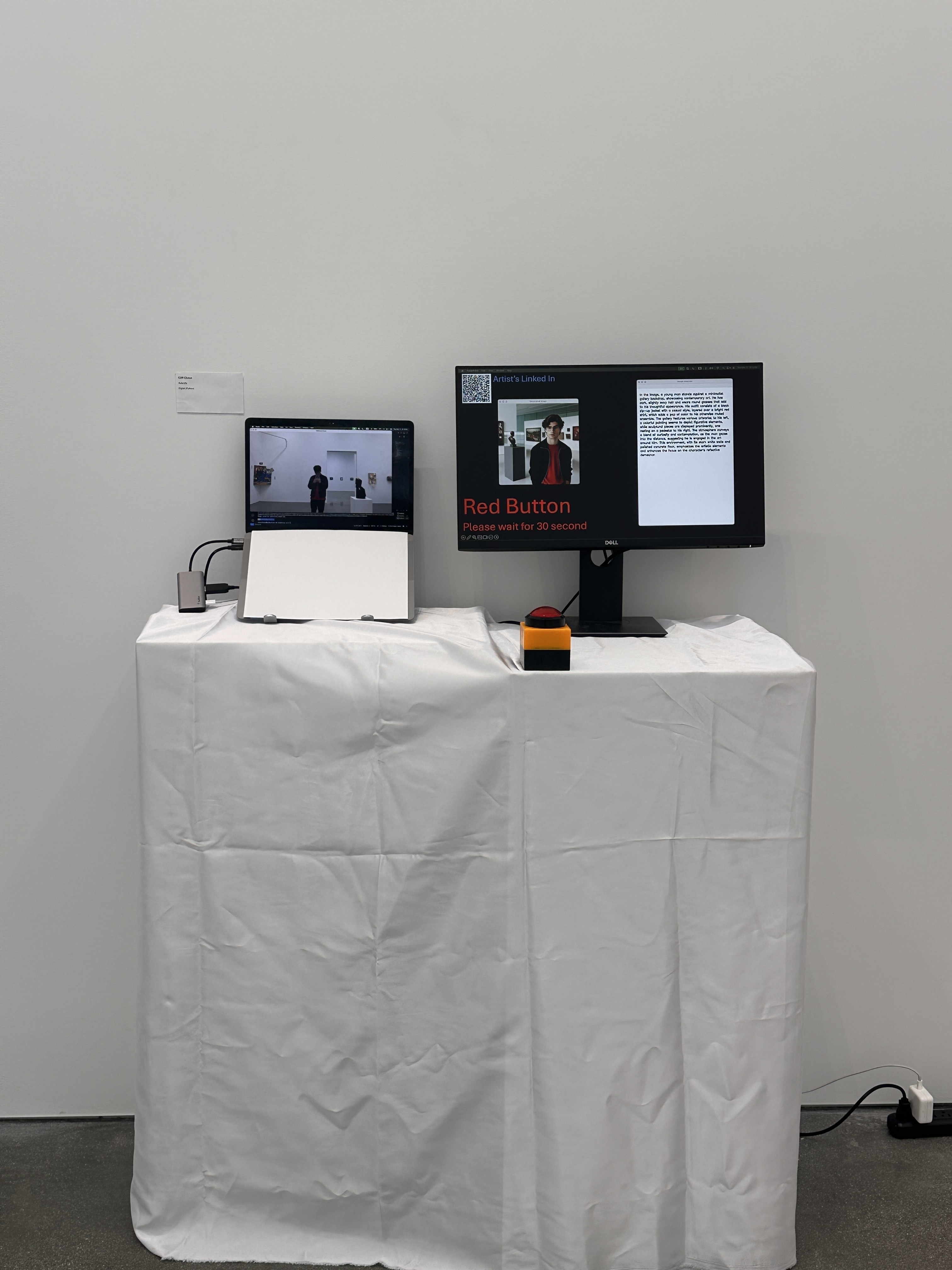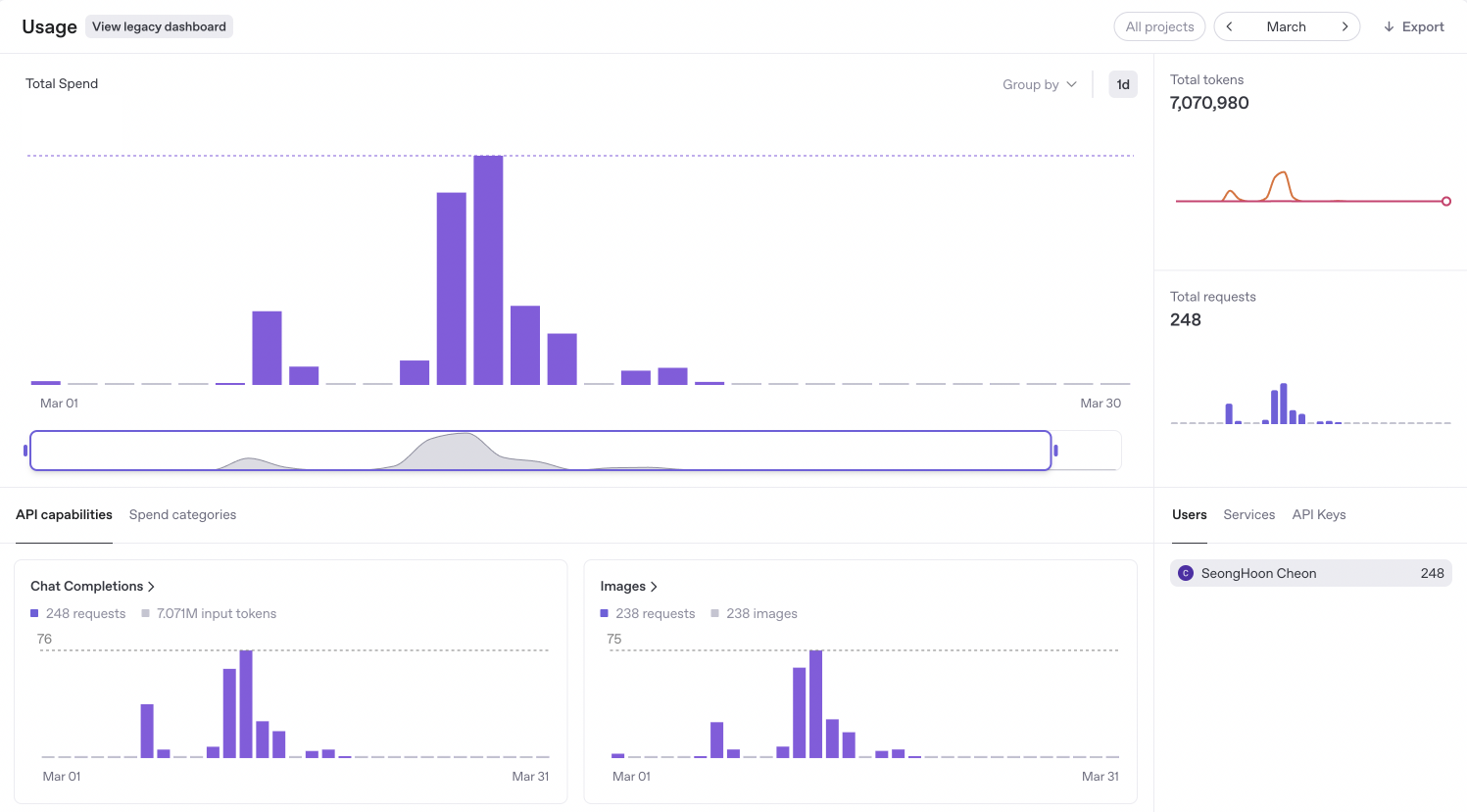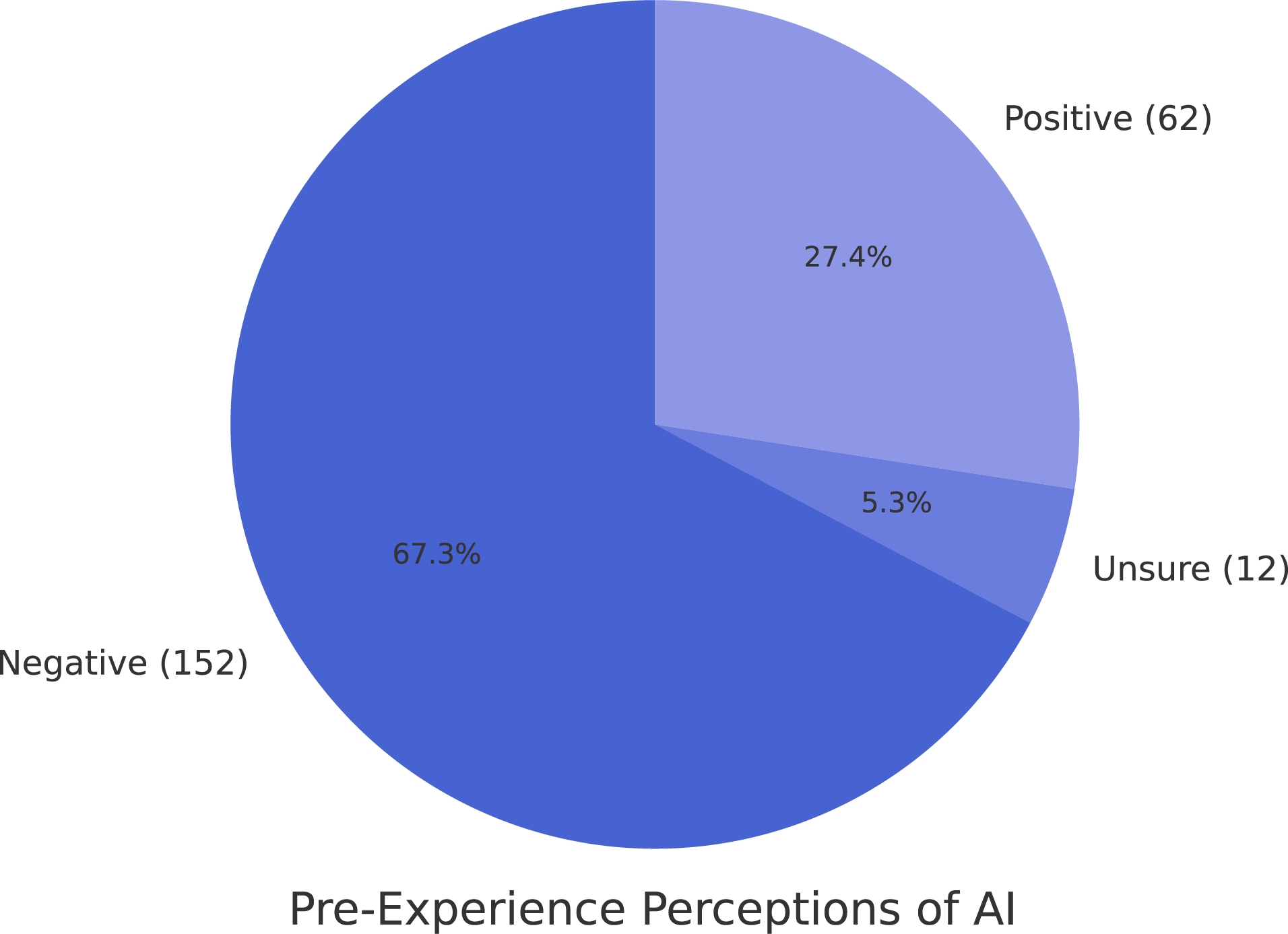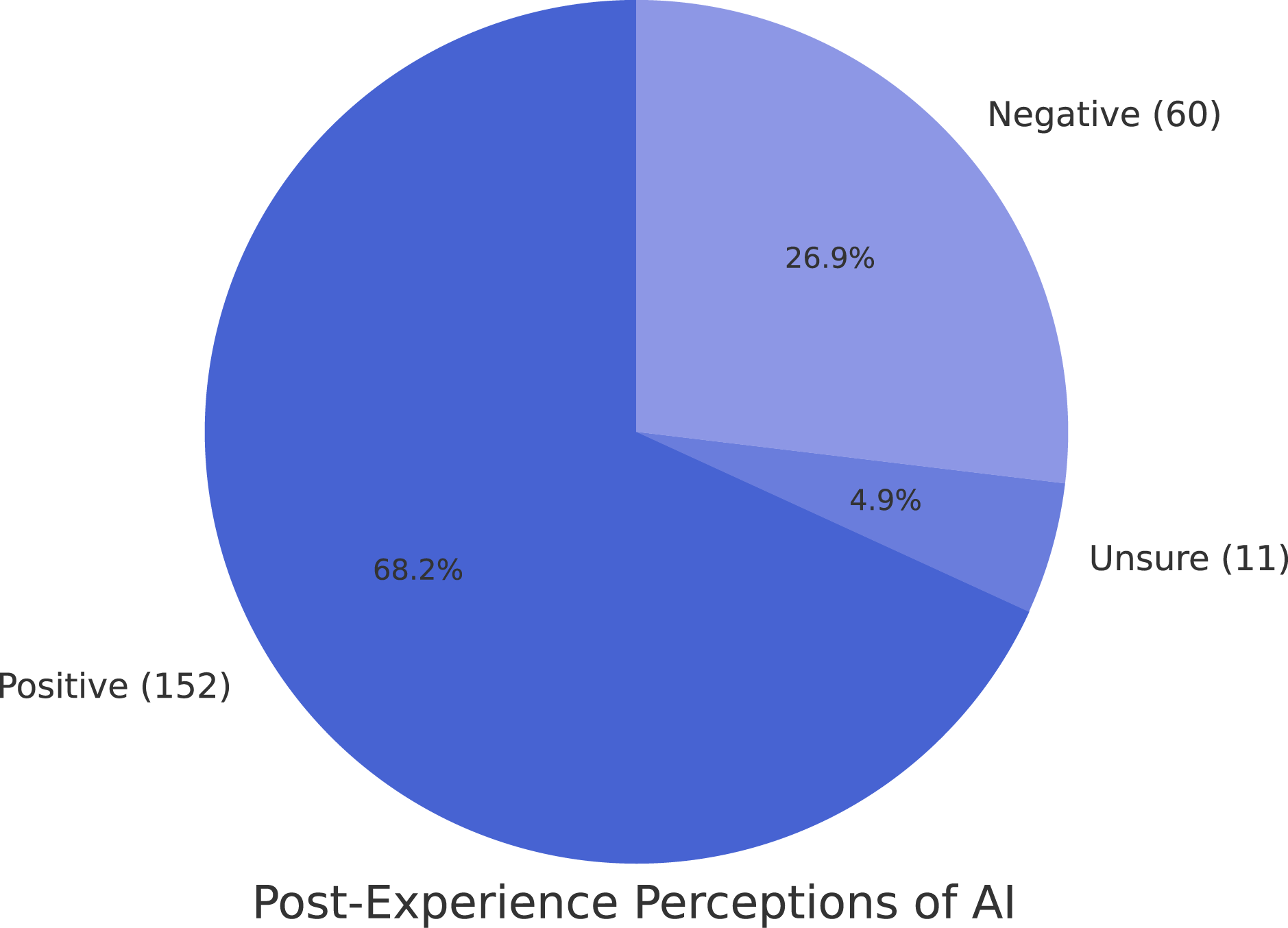
Aidentity
Bridging the AI Perception Gap

The Challenge
Understanding User Barriers: Negative perceptions of AI among users at California State University, Fullerton created significant barriers to engagement. Fear, skepticism, and misinformation limited productive exploration of AI's potential.
Research revealed specific concerns: job displacement fears, ethical questions, and widespread misconceptions about AI capabilities that needed immediate addressing.
Fear of Job Displacement
Students worried AI would replace human creativity and critical thinking in their future careers.
Ethical Concerns
Misconceptions about AI bias, privacy, and responsible technology development.
Technology Intimidation
Complex AI systems felt inaccessible and overwhelming to non-technical users.
UX Design Approach
Developed in Python, Aidentity provides an interactive experience that transforms how campus communities perceive AI. By enabling real-time visual analysis and creative reinterpretation of identities, users directly engage with AI in a positive, personalized context.
1. Image Capture
Users take photos using a simple red button interface, removing technical barriers to engagement.
2. AI Analysis
System analyzes visual elements and generates creative, descriptive interpretations in real-time.
3. Creative Generation
AI transforms analysis into unique artistic representations, demonstrating creative potential.
4. User Reflection
Participants experience direct AI interaction, demystifying the technology through hands-on engagement.
Design Goal: Spark curiosity and reduce emotional distance by revealing AI's visual interpretation process through direct, personalized creative engagement.
Installation Prototyping
Users take photos through an intuitive interface. The system analyzes images, generates descriptive text, and then creates new visual content based on that analysis, revealing the interpretation process.
1. Image Capture

2. Caption Generation

3. Image Generation

Installation Demo Video
Research-Driven Design Process
1. Context Analysis
At CSU Fullerton, many students view AI with fear, skepticism, or indifference despite rapid advancements.
2. Pre-Research
Conducted comprehensive study with 72 students and faculty gathering honest opinions on AI's impact and ethics.
3. Key Insights
AI commonly associated with job risks and unethical shortcuts, with emotional responses ranging from fear to indifference.
4. Design Solution
Created personal, interactive experience to demystify AI through direct user engagement and creative output.
Technical Implementation & User Research

Python-Based Development
Custom application integrating multiple AI systems into a seamless, responsive user experience.
AI Image Analysis
Cutting-edge natural language processing delivers nuanced, creative interpretations of user images.
AI Integration
Advanced image generation creates personalized visual outputs that transform user perceptions.
Field Research
Comprehensive research methodology captured immediate reactions and emotional responses.
Iterative Prototyping Process
I developed and tested 5 comprehensive system versions using Python and multiple APIs to optimize user experience and technical performance:
Case #1: OpenCV + BLIP → DALL·E 2
Challenge: Generated captions were unclear, final images had little relevance.
Solution: Added ChatGPT API to refine captions.
Case #2: OpenCV + BLIP + ChatGPT → DALL·E 2
Challenge: AI hallucinations occurred frequently.
Solution: Replaced BLIP with CLIP API for better alignment.
Case #3: OpenCV + CLIP + ChatGPT → DALL·E 2
Challenge: Instability and inefficiency from redundant processes.
Solution: Streamlined to ChatGPT-only analysis, upgraded to DALL·E 3.
Case #4: OpenCV + ChatGPT → DALL·E 3
Challenge: Slow generation speed and high cost (~$1/image).
Solution: Explored alternatives for cost efficiency.
Case #5: OpenCV + ChatGPT → DALL·E 2 (Final)
Optimal Solution: Best balance of cost, speed, and output quality. Efficient enough for real-time gallery interaction.
Implementation & Real User Testing
Streamlined User Experience
Designed a simple, intuitive interface featuring a physical red button that initiates the entire user photo capture and AI processing workflow.
Image Capture
Single button press activates camera.
AI Processing
Generate descriptive text analysis from image.
Creative Generation
Create AI-generated image based on text.
User Reflection
Display results for user contemplation.
Privacy-First Design
Photos are not stored externally and are overwritten during each session to protect user data while encouraging fearless participation.
Gallery Installation Experience
This interactive installation was strategically exhibited in our university's premier art gallery space, maximizing exposure and encouraging participation from a diverse academic audience including students, faculty, and visitors.
The gallery setting provided an ideal environment where participants could personally engage with AI technology and exchange thoughts and feedback with other visitors, creating a community dialogue about the future of artificial intelligence.

California State University, Fullerton
Marilyn and Cline Duff Gallery Exhibition (March 2025)
Premier Gallery Space
High-visibility university exhibition venue
Diverse Audience
Students, faculty, and community visitors
Community Dialogue
Facilitated meaningful conversations about AI
Data-Driven Results
Transforming perceptions through experiential design.
Pre-Experience AI Perceptions
Before participants experienced the installation, we conducted comprehensive surveys to understand baseline perceptions of AI technology.

- Negative Views (67%): 152 of 226 respondents expressed skepticism or fear.
- Positive Outlook (27%): Only 62 participants initially approached AI with optimism.
- Uncertain (5%): 12 respondents remained undecided.
Post-Experience Transformation
After engaging with the Aidentity installation, a dramatic shift in perception occurred, demonstrating the power of experiential design.

- Positive Impression (68%): 152 of 223 participants reported positive views after interaction.
- Still Negative (27%): 60 participants maintained negative views.
- Remained Unsure (5%): 11 participants stayed uncertain.
Perception Shift: Before vs. After
"Fun" Responses
138Participants described the experience as enjoyable and engaging.
"Scary" Feedback
81Initial intimidation gave way to curiosity through interaction.
"Silly" Reactions
39Users found AI interpretations amusing and surprisingly creative.
"Surprising" Comments
6Exceeded expectations for AI's creative and interpretive capabilities.
Key Insight: When AI is presented in a creative, interactive format that directly addresses user concerns, it can significantly improve public perception.